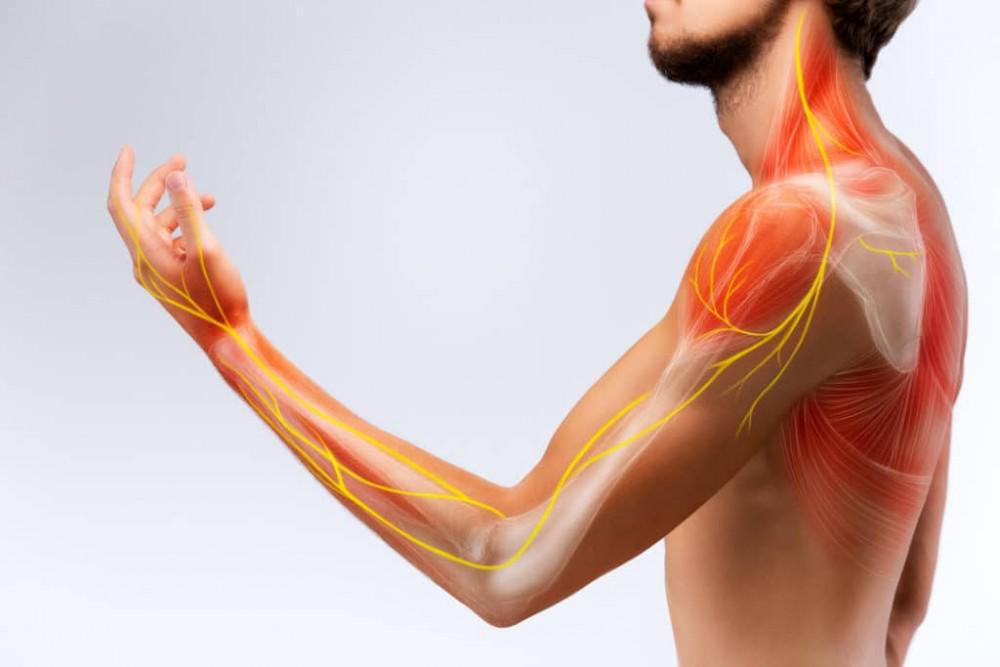Neuropathic pain, also referred to as neuralgia or nerve pain, is a complex and incapacitating condition that arises from abnormalities or damage within the nervous system. Unlike other types of pain, It does not result from external injuries or inflammation; instead, it stems from dysfunction in the nervous system itself. This article aims to explore the causes, symptoms, and treatment options for neuropathic pain.
Understanding the Causes of Neuropathic Pain
It can be triggered by various factors that interfere with the proper functioning of nerves. Common causes include:
- Nerve Compression: Conditions such as herniated discs, carpal tunnel syndrome, or sciatica can exert pressure on nerves, leading to it.
- Diabetes: Elevated blood sugar levels in diabetic patients can damage nerves over time, resulting in diabetic neuropathy.
- Infections: Certain infections like shingles, HIV, and Lyme disease can cause nerve damage, leading to neuropathic pain.
- Trauma or Injury: Accidents or injuries that affect nerves can cause chronic neuropathic pain.
- Neurological Disorders: Conditions like multiple sclerosis, stroke, and Parkinson’s disease can trigger neuropathic pain.
- Chemotherapy: Some cancer treatments, particularly chemotherapy, can damage nerves and cause pain.
- Toxic Exposure: Exposure to toxins such as heavy metals or chemicals can lead to neuropathy and associated pain.
Identifying Symptoms of Neuropathic Pain
It manifests in various ways, and symptoms may vary depending on the underlying cause. Common symptoms include:
- Burning Sensation: Patients often describe neuropathic pain as a burning or shooting sensation that can be constant or intermittent.
- Numbness and Tingling: Nerve damage can cause sensations of numbness, tingling, or pins and needles in the affected area.
- Electric Shock Sensation: Some individuals may experience sudden, sharp electric shock-like pains.
- Hypersensitivity: The affected area may become extremely sensitive to touch, temperature changes, or pressure.
- Muscle Weakness: Nerve damage can lead to muscle weakness, making it challenging to perform certain activities.
- Sleep Disturbances: Neuropathic pain can disrupt sleep patterns, leading to fatigue and reduced quality of life.
Diagnosis of Neuropathic Pain
Diagnosing neuropathic pain involves a comprehensive assessment of the patient’s medical history, symptoms, and a physical examination. Additionally, various tests may be conducted, including:
- Nerve Conduction Studies (NCS): This test measures the speed of nerve signals, helping to identify nerve damage and its location.
- Electromyography (EMG): EMG assesses muscle health and can help determine if nerve dysfunction is affecting muscle function.
- Imaging Studies: MRI or CT scans can be useful in identifying structural issues like herniated discs or tumors that may be causing nerve compression.
- Blood Tests: Blood tests can help identify conditions like diabetes or vitamin deficiencies that may be contributing to neuropathic pain.
Available Treatment Options
Treating it can be challenging, but several approaches have proven effective in managing the condition. These include:
- Medications: Various medications can help alleviate neuropathic pain. These include:
- Antidepressants: Certain tricyclic antidepressants (e.g., amitriptyline) and serotonin-norepinephrine reuptake inhibitors (SNRIs) can help block pain signals in the brain.
- Anticonvulsants: Drugs like Pregalin 50mg are often used to treat neuropathic pain by stabilizing nerve activity.
- Topical Medications: Creams or patches containing lidocaine or capsaicin can provide localized relief.
- Physical Therapy: Physical therapy can improve strength and flexibility, reducing pressure on affected nerves and promoting healing.
- Nerve Blocks: In some cases, nerve blocks may be performed to temporarily block nerve signals and provide pain relief.
- Transcutaneous Electrical Nerve Stimulation (TENS): TENS involves using a device to deliver electrical currents to the affected area, which can disrupt pain signals.
- Spinal Cord Stimulation: This procedure involves implanting a device that delivers electrical impulses to the spinal cord, reducing pain perception.
- Lifestyle Modifications: Managing underlying conditions like diabetes and adopting a healthy lifestyle can help prevent further nerve damage.
- Counseling and Cognitive-Behavioral Therapy (CBT): Psychological support can be beneficial for coping with chronic pain and improving overall well-being.
Conclusion
It is a complex and debilitating condition that significantly impacts the quality of life of affected individuals. Understanding the causes, symptoms, and available treatment options is crucial for effective management. While complete resolution of it may not always be possible, a combination of medications, therapies, and lifestyle changes can help improve symptoms and enhance the overall well-being of patients living with this condition. Early diagnosis and a multidisciplinary approach are essential for better outcomes in those suffering from neuropathic pain.

